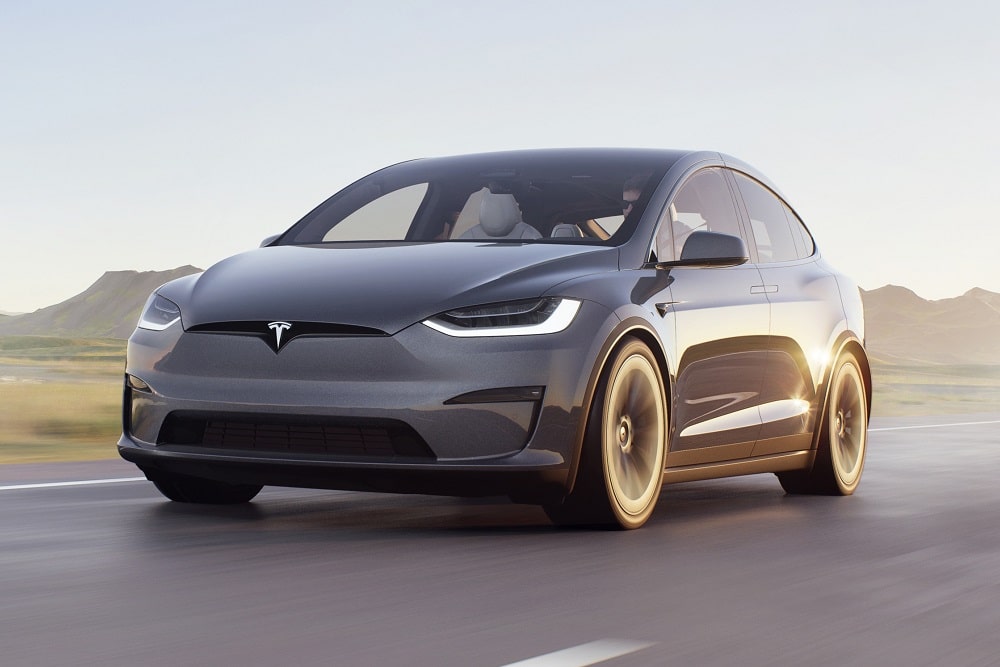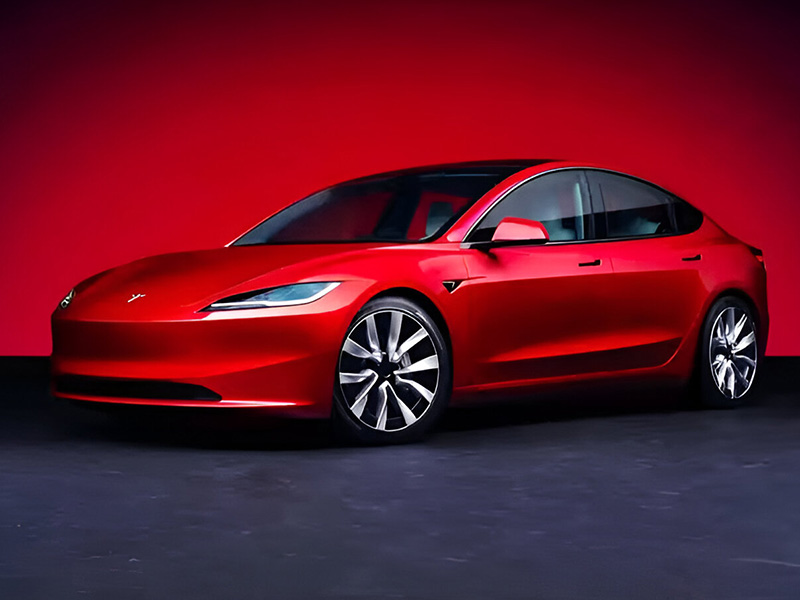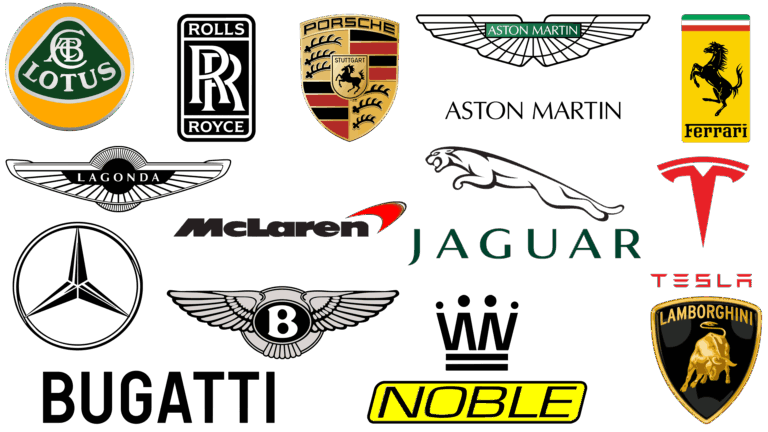Tesla Inc Car Brands: A Deep Dive into the Electric Vehicle Ecosystem
Tesla Inc Car Brands: A Deep Dive into the Electric Vehicle Ecosystem cars.truckstrend.com
Introduction: Defining the Tesla Phenomenon
When we speak of "Tesla Inc Car Brands," it’s crucial to clarify a common misconception. Unlike traditional automotive conglomerates such as General Motors or Volkswagen Group, which manage a portfolio of distinct car brands (e.g., Chevrolet, Cadillac, GMC, Buick under GM, or Audi, Porsche, Skoda, Seat under VW), Tesla Inc itself is the singular, overarching brand. It does not operate multiple sub-brands for its vehicles. Instead, Tesla is a pioneer and a leader in the electric vehicle (EV) industry, known for its innovative approach to design, performance, and technology, offering a diverse lineup of models under the single "Tesla" marque.
Tesla Inc Car Brands: A Deep Dive into the Electric Vehicle Ecosystem
This article will delve into these distinct Tesla models, exploring their unique attributes, the shared technological advancements that bind them, and the holistic ownership experience they offer. Understanding Tesla is not just about its cars; it’s about grasping a vertically integrated ecosystem that encompasses energy solutions, charging infrastructure, and cutting-edge software. This comprehensive guide aims to shed light on what makes Tesla a pivotal player in the automotive world, shaping the future of transportation.
The Core Philosophy: Innovation, Electrification, and Software Integration
Tesla’s journey began with a bold vision: to accelerate the world’s transition to sustainable energy. This mission is embodied in every vehicle it produces. Unlike legacy automakers converting existing platforms to electric, Tesla started from a clean sheet, designing its vehicles from the ground up as electric. This approach allowed for optimized battery placement, superior aerodynamics, and revolutionary interior layouts.
A cornerstone of the Tesla brand is its relentless pursuit of innovation, particularly in three key areas:
- Battery Technology and Powertrain: Tesla has consistently pushed the boundaries of battery energy density, efficiency, and longevity, enabling longer ranges and faster charging times. Their integrated powertrain designs deliver instant torque and exhilarating performance.
- Software-Defined Vehicles: Tesla cars are essentially computers on wheels. Their functionality is heavily reliant on sophisticated software, which can be updated over-the-air (OTA) to introduce new features, improve performance, and enhance safety, much like a smartphone. This constant evolution via software updates is a unique selling proposition.
- Autonomous Driving Capabilities: Through its advanced driver-assistance system, Autopilot, and the ambitious Full Self-Driving (FSD) Beta program, Tesla aims to revolutionize driving by making vehicles safer and eventually fully autonomous.

These pillars form the foundation of the "Tesla brand" experience, transcending individual models and defining the company’s identity in the automotive landscape.
The Tesla Model Lineup: A Detailed Exploration
Tesla’s vehicle portfolio has grown strategically over the years, aiming to cover various market segments from luxury performance to mass-market utility.
1. Tesla Model S: The Flagship Sedan

- Purpose & History: Introduced in 2012, the Model S was Tesla’s second production car and the first mass-produced electric sedan. It redefined expectations for electric vehicles, proving they could be luxurious, high-performance, and long-range.
- Key Features: Known for its sleek design, spacious interior, large central touchscreen, and blistering acceleration. The "Plaid" variant is a hypercar competitor, offering mind-bending speed. It boasts impressive range and advanced features like active noise cancellation.
- Target Audience: Luxury car buyers, tech enthusiasts, and those seeking a premium, high-performance electric sedan.
- Considerations: Higher price point, though it offers unparalleled performance and technology for its segment.

2. Tesla Model X: The Revolutionary SUV
- Purpose & History: Launched in 2015, the Model X is Tesla’s full-size SUV, notable for its unique "Falcon Wing" doors that allow easier access to the second and third rows. It combines SUV practicality with supercar performance.
- Key Features: Falcon Wing doors, expansive panoramic windshield, seating for up to seven adults, impressive towing capacity, and the same high-performance powertrain options as the Model S.
- Target Audience: Families needing space and versatility, luxury SUV buyers, and those who appreciate innovative design and technology.
- Considerations: Falcon Wing doors, while iconic, can sometimes pose challenges in tight spaces. Higher entry price due to its premium features and size.
3. Tesla Model 3: The Mass-Market Game Changer
- Purpose & History: Unveiled in 2016 and delivered in 2017, the Model 3 was designed to be Tesla’s more affordable, high-volume vehicle, crucial for accelerating EV adoption. It quickly became one of the best-selling EVs globally.
- Key Features: Minimalist interior design, excellent driving dynamics, impressive range for its class, and strong performance. It’s often praised for its efficiency and agility.
- Target Audience: Mainstream car buyers, commuters, younger families, and those seeking an efficient, technologically advanced electric sedan without the premium price tag of the Model S.
- Considerations: Simpler interior might not appeal to everyone. Rear trunk opening is smaller than a hatchback.
4. Tesla Model Y: The Practical Crossover
- Purpose & History: Introduced in 2020, the Model Y is a compact crossover SUV that shares much of its platform and components with the Model 3. It quickly became Tesla’s best-selling vehicle due to its versatility and popular SUV form factor.
- Key Features: Elevated seating position, generous cargo space (with a practical liftgate), optional third-row seating (though tight), and similar performance and range to the Model 3.
- Target Audience: Small families, individuals needing more utility than a sedan, and those seeking a practical, efficient electric SUV.
- Considerations: Optional third row is very small. Ride can be firm on certain configurations.
5. Tesla Cybertruck: The Future of Utility
- Purpose & History: Unveiled in 2019 and entering production in late 2023, the Cybertruck represents Tesla’s audacious entry into the highly competitive pickup truck market. Its unconventional, angular design is meant to be highly durable and functional.
- Key Features: Exoskeleton design with ultra-hard stainless steel, armored glass, steer-by-wire, air suspension, impressive towing capacity, and a versatile bed ("vault") with a powered tonneau cover.
- Target Audience: Truck enthusiasts, early adopters, those seeking extreme durability and utility, and buyers who want a vehicle that stands out.
- Considerations: Radical design may not appeal to all traditional truck buyers. Early production means potential for initial quirks.
6. Tesla Roadster (Next Generation): The Hypercar Reimagined
- Purpose & History: The original Roadster was Tesla’s first production car (2008-2012). The next-generation Roadster, unveiled in 2017 and still in development, aims to be the fastest production car ever.
- Key Features: Unprecedented acceleration (0-60 mph in under 2 seconds), a projected range of 620 miles, and a sleek, futuristic design.
- Target Audience: Supercar enthusiasts, collectors, and those seeking the absolute pinnacle of electric performance.
- Considerations: Extremely high price point, limited availability, and a long development timeline.
7. Tesla Semi: Electrifying Commercial Transport
- Purpose & History: Unveiled in 2017 and entering limited production in 2022, the Tesla Semi aims to revolutionize freight transport by offering an electric alternative to diesel trucks.
- Key Features: Impressive range (300 or 500 miles), powerful acceleration, lower operating costs, and enhanced safety features.
- Target Audience: Commercial trucking companies, logistics firms, and businesses committed to reducing their carbon footprint in their supply chains.
- Considerations: Charging infrastructure for heavy-duty vehicles is still developing. High initial cost compared to diesel trucks, though offset by lower fuel and maintenance.
Key Technologies Unifying the Tesla Experience
Beyond individual models, several overarching technologies define the Tesla brand:
- The Supercharger Network: Tesla’s proprietary global fast-charging network is a major differentiator, providing reliable and convenient charging for long-distance travel. Its widespread availability significantly mitigates "range anxiety."
- Autopilot and Full Self-Driving (FSD): These advanced driver-assistance systems leverage an array of cameras, sensors, and powerful AI to offer features like adaptive cruise control, lane keeping, automatic lane changes, and eventually, full autonomous driving capabilities.
- Over-the-Air (OTA) Software Updates: This continuous improvement model means Tesla vehicles get smarter, more efficient, and gain new features long after purchase, enhancing their longevity and value.
- Integrated Infotainment System: The large central touchscreens in all models serve as the command center for navigation, media, climate control, vehicle settings, and even entertainment (Netflix, YouTube, gaming).
- Battery Management Systems: Tesla’s expertise in optimizing battery performance, thermal management, and longevity is crucial for its vehicles’ impressive range and lifespan.
The Tesla Ownership Experience: Beyond the Purchase
Owning a Tesla is often described as more than just driving a car; it’s an integrated lifestyle experience:
- Charging: While home charging is primary, the Supercharger network makes road trips feasible. Destination chargers and public charging options further expand convenience.
- Service: Tesla operates its own service centers and mobile service units, providing a direct-to-consumer service model. Diagnosis and some fixes can even be done remotely via software.
- The Tesla App: A central hub for managing your vehicle – checking charging status, pre-conditioning the cabin, summoning the car, scheduling service, and even using your phone as a key.
- Community: Tesla owners often form passionate communities, sharing tips, organizing meetups, and advocating for electric vehicle adoption.
Practical Advice and Actionable Insights for Prospective Buyers
- Assess Your Needs: Determine if a sedan (Model 3, S) or an SUV (Model Y, X) better suits your lifestyle regarding space, cargo, and passenger capacity.
- Consider Your Budget: While incentives can help, Tesla vehicles represent a significant investment. Factor in not just the purchase price but also potential charging costs (which are generally lower than gasoline), insurance, and maintenance.
- Understand Range: Most modern Teslas offer ample range for daily commuting. Evaluate your typical driving patterns and consider the availability of charging at home, work, and along common routes.
- Embrace Technology: Tesla ownership means being comfortable with a highly digital, software-centric vehicle. Over-the-air updates are frequent and can change the car’s functionality.
- Test Drive: The best way to understand the Tesla experience is to schedule a test drive. Pay attention to the minimalist interior, the regenerative braking, and the instant torque.
- Explore Charging Options: Plan for home charging (Level 2 charger is highly recommended for convenience) and familiarize yourself with the Supercharger network for longer trips.
Challenges and Future Outlook
Despite its successes, Tesla faces challenges. Competition in the EV space is intensifying, with traditional automakers and new entrants releasing compelling electric vehicles. Scaling production to meet demand, ensuring battery supply, and navigating evolving regulatory landscapes are ongoing hurdles.
However, Tesla’s future looks bright. Continued advancements in battery technology (e.g., 4680 cells, structural battery packs), expansion of the Supercharger network, development of autonomous driving, and the potential for new vehicle categories (like robotaxis or even personal aerial vehicles) position Tesla to remain a dominant force in the global transition to sustainable energy.
Price Table: Tesla Inc Car Brands (Estimated Base Prices – USD)
| Model | Body Type | Estimated Starting Price (USD) | Key Features / Notes |
|---|---|---|---|
| Model 3 | Sedan | $38,990 – $54,990 | Most affordable; agile handling; minimalist interior. |
| Model Y | Crossover SUV | $44,990 – $59,990 | Practical; generous cargo; optional 7-seat layout. |
| Model S | Luxury Sedan | $74,990 – $89,990 | Flagship; long range; high performance (Plaid available). |
| Model X | Luxury SUV | $79,990 – $94,990 | Falcon Wing doors; spacious; powerful; 7-seat option. |
| Cybertruck | Pickup Truck | $60,990 – $99,990 | Ultra-hard stainless steel; unique design; high utility. |
| Roadster | Electric Supercar | Est. $200,000+ (Future) | Next-gen; extreme speed; longest range. (Pre-order only) |
| Semi | Commercial Truck | Est. $180,000+ (Future) | Long-haul electric trucking; high torque. (Fleet orders) |
Disclaimer: Prices are estimated base prices for entry-level configurations in the U.S. market as of early 2024 and are subject to change by Tesla Inc. without notice. They do not include destination fees, taxes, options, or potential federal/state incentives. Actual prices will vary significantly based on battery size, drivetrain (RWD/AWD), performance variants, and chosen features.
Frequently Asked Questions (FAQ) about Tesla Inc Car Brands
Q1: Does Tesla have different car brands?
A1: No, Tesla Inc is the brand. It produces various models (Model S, 3, X, Y, Cybertruck, Roadster, Semi) under the single "Tesla" marque, unlike traditional automakers with multiple sub-brands.
Q2: What is the most affordable Tesla model?
A2: The Tesla Model 3 (Rear-Wheel Drive) is typically the most affordable entry point into the Tesla lineup.
Q3: How long does it take to charge a Tesla?
A3: Charging time varies significantly based on the charging method:
- Level 1 (Standard Wall Outlet): Very slow, adds only a few miles per hour.
- Level 2 (Home Charger/Public AC): Adds 30-45 miles per hour, fully charging overnight.
- Tesla Supercharger (DC Fast Charging): Can add 150-200+ miles in about 15-30 minutes, getting you to 80% very quickly.
Q4: Is Tesla Full Self-Driving (FSD) truly autonomous?
A4: No, currently, Tesla’s Full Self-Driving (FSD) Beta is a Level 2 advanced driver-assistance system. It requires active driver supervision at all times and does not make the vehicle fully autonomous. Drivers must remain attentive and ready to take control.
Q5: What is the range of a Tesla vehicle?
A5: Range varies by model and configuration, generally from around 260 miles (e.g., base Model 3) to over 400 miles (e.g., Model S Long Range). Factors like driving style, speed, temperature, and terrain can affect real-world range.
Q6: Do Teslas require a lot of maintenance?
A6: EVs generally require less maintenance than gasoline cars because they have fewer moving parts. Teslas do not require oil changes, spark plug replacements, or traditional transmission fluid flushes. Maintenance typically involves tire rotations, brake checks (though regenerative braking reduces wear), cabin air filter replacements, and fluid checks.
Q7: Can I use non-Tesla chargers for my Tesla?
A7: Yes, with an adapter (e.g., CCS adapter for North America) Teslas can use many non-Tesla public charging stations. Tesla is also opening its Supercharger network to non-Tesla EVs in many regions.
Conclusion: Tesla’s Enduring Impact
Tesla Inc, through its innovative approach and diverse lineup of electric vehicle models, has undeniably reshaped the automotive industry. From the luxury performance of the Model S and X to the mass-market accessibility of the Model 3 and Y, and the bold utility of the Cybertruck, Tesla has consistently pushed the boundaries of what an electric vehicle can be. Its commitment to integrated technology, an expansive charging network, and continuous software improvements defines the "Tesla brand" more than any individual model.
As the world accelerates its transition to sustainable energy, Tesla stands as a testament to the power of vision and relentless innovation. Understanding its models and the underlying philosophy is key to appreciating its ongoing impact on transportation and beyond, solidifying its position not just as a car manufacturer, but as a pivotal force driving humanity towards a more sustainable future.



